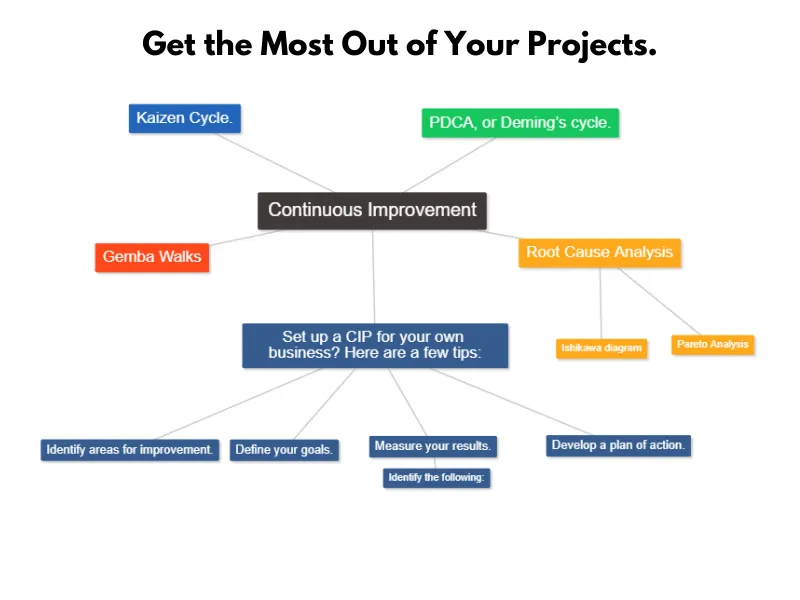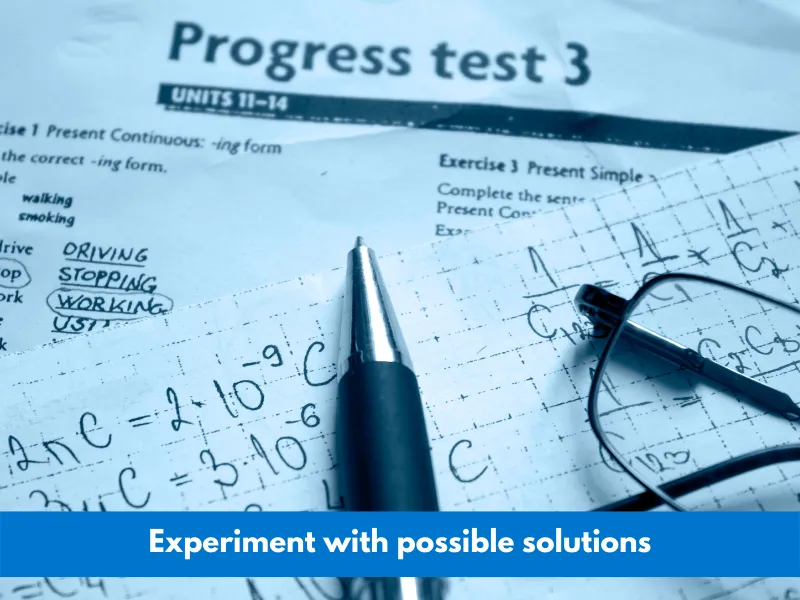
It’s no secret that constantly improving your productivity and workflow is key to success as a project manager. But where do you start? One great way to make continuous improvement an ingrained part of your work process is to implement a continuous improvement (CIP) in the workplace.
A CIP is a systemized way of constantly looking for ways to improve your productivity and workflow. It can take many forms, but typically includes setting goals, measuring results, and making changes based on what you learn.
One of the advantages of using a CIP is that it helps you get the most out of your projects. By identifying and addressing potential problems and making small tweaks to your process, you can avoid disaster and ensure that your projects are on track.
A continuous improvement strategy is a systemized way of constantly looking for ways to improve your productivity and workflow with incremental improvements. It can take many forms, but typically includes setting goals, measuring results, stream mapping, and making changes based on improvement ideas, practices and company culture.
A CIP also helps you to become more efficient and productive over time. As you become more familiar with the process and the tools you’re using, you’ll be able to work faster and more effectively.
What are the Benefits of the Continuous Improvement Model
continuous improvement cycle?
Continuous improvement is a process that can help you get the most out of your projects. By working on improving your process from the beginning, you can make sure that your projects are more efficient and successful. Here are some of the benefits of continuous improvement:
1. You can save time and money. Continuous improvement can help you avoid common mistakes and save both time and money on your projects. By making small changes to your process from the beginning, you can avoid larger problems down the road.
2. Your projects will be more successful. By taking steps to improve your process from the start, you will create a better project overall. This will result in a higher quality product or service, which is likely to be more successful than one that is not improved.
3. You will be able to work more efficiently. By improving your process from the start, you will be able to work more productively and effectively on each project. This will allow you to spend less time doing tasks that are not essential to the success of a project, and more time focusing on those areas that are most important.
Kaizen Cycle.
The Kaizen Cycle is an iterative process that aims to improve processes and products based on feedback and data.People who work in an organization should be engaged in the decision-making process on a daily basis.They should have input into how their jobs are performed and what they expect from their jobs. Kaizen is an interesting concept. It’s a philosophy, a way of thinking about things. In this case, it means continuous improvement. Kaizen is a cycle of seven steps. Each step is a phase in the kaizen process. You can see each phase in the picture above.Every day, everywhere, and be friendly to everyone.Engaging your employees is key to improving business performance. People who are engaged are more productive than those who aren’t.
PDCA, or Deming’s cycle.
How Does PDCA Help Enable a Continuous Improvement Cycle?
PDCA is an effective way to ensure that projects stay on track and achieve their objectives. The five steps of the PDCA process are: Planning (defining the problem), Do It (performing the task), Check It (verifying that the task was performed as planned), Act On It (implementing any changes that were found during Check It), and Analyze It (evaluating project results). Each step helps improve quality by ensuring that tasks are properly planned, executed, and analyzed.
What Are Some Common PDCA Techniques?
1. Define the problem
2. List the possible causes
3. Evaluate the severity of the problem
4. Choose the best course of action (planning phase)
5. Communicate results
One of the most common PDCA techniques is called “Prioritization.” This is when you identify the tasks that need to be done first and then work your way down the list until all the tasks have been completed. This allows you to stay focused and on track, while ensuring that important tasks are completed before less important ones.
Another common PDCA technique is “Observation.” This is when you keep track of what is happening with your project, both during its planning stages and during its execution. By doing this, you can identify any problems early on and work to correct them before they become too big a problem.
By using the PDCA technique, businesses can identify and address issues that are causing their products or services to fall short of customer expectations.
Gemba Walks
What are Kaizen Gemba Walks?
Kaizen gemba walks are a type of workplace improvement activity that can help to improve efficiency and effectiveness in a company. They involve teams of employees walking around the work area, pointing out areas where improvements can be made. The goal is to make small, manageable changes that will result in overall improvements.
Kaizen gemba walks are often used as a way to identify problems and potential solutions. By walking around the work area, employees are more likely to notice issues that may have otherwise gone unnoticed. This can help to prevent larger problems from developing and also gives employees an opportunity to suggest solutions.
The benefits of kaizen gemba walks include improved efficiency and effectiveness, reduced waste, and increased morale. By improving the flow of information throughout the company, kaizen gemba walks can lead to significant improvements in performance.

Why are They Important?
Gemba walks are a great way to improve your balance, coordination, and strength. They also help improve your breathing and circulation. Gemba walks can be done anywhere there is room to walk, including in the office or at home.
How to do Kaizen Gemba Walks?
Gemba walks are a great way to improve the flow of work in your factory or office. They can help you to identify and fix problems quickly, and they can also help you to increase efficiency and production.
To do a gemba walk, first find a place where you can move around easily. Next, start by walking around the area slowly, taking note of any problems or issues that you encounter. Once you’ve finished your walk, use this information to fix whatever needs fixing. Gemba walks are an easy way to get started on improving your workflow, so be sure to give them a try!
What are the Benefits of Doing Kaizen Gemba Walks?
There are many benefits to doing kaizen gemba walks. First and foremost, these walks help to improve communication and teamwork across the organization. They also help to identify and address problems early on, which can save time and resources in the long run. Finally, kaizen gemba walks provide an opportunity for employees to learn new techniques and processes, which can improve their skill set overall.
Conclusion: Kaizen gemba walks are a great way to improve communication and collaboration between workers. They can help to improve quality and speed up production.
The term originates from the Japanese word Genba, meaning “the actual place”. Thus, a Gemba walk simply means that management goes to the front line of the company where the work actually happens, be it the manufacturing floor or wherever customer service happens, walks around, observes how things are being done and asks questions.To be more specific, the idea is that these visits should be unscripted, and you shouldn’t try to point out issues to employees whenever you see them, but learn to understand what’s really happening, collect input from and engage with employees.
Source: (viima.com)
Root Cause Analysis
Root Cause Analysis (RCA) is a technique practiced in Lean management that allows you to achieve Kaizen by showing you the root causes of your process’s problems. It can be used as a diagnostic tool, stream mapping, and it can also be used for continuous improvement. RCA helps you identify where the problem lies in your system so that you can fix it. Tools used are: Pareto analysis, Ishikawa diagram, 5 Why’s, and cause-and-effect diagrams.

Pareto Analysis
The Pareto principle states that 20% of a group’s output will account for 80%
Ishikawa diagram
An Ishikawa diagram (or fish bone diagram) is a visual tool used to help you understand the cause and effect relationships between different factors. It’s also known as a decision tree, cause-and-effect chart or flow chart.
How do you set up a CIP for your own business? Here are a few tips:
If you want to avoid problems, make sure that your team is working well together.
- Your development team spent too much time developing features instead of testing them.
- You should test every feature individually, not in batches.
- A lot of features at once makes it harder to fix bugs.
- Analyze the root cause of the issue.
- Experiment with possible solutions.
- Prevent similar issues from occurring in the future.
1. Define your goals.
The first step is to define your goals for the CIP. What do you hope to achieve? Some common goals include increased efficiency, improved quality, and reduced costs. Identify the steps that need to be completed. Once you’ve defined your goals, determine which steps will be necessary to achieve them—and make sure they’re indeed required.
It’s also important to be realistic when creating your plan of action. Don’t try to accomplish too much at once – start with one or two goals and build from there.
Once you know what you need to work on, you need to develop a plan of action. This will include specific steps that you need to take to achieve your goals.
2. Identify areas for improvement.
Once you have your goals in mind, you need to identify areas for improvement. This can be done by reviewing your quality management systems and identifying areas that could use some improvement. Some areas you may want to consider are:
- Employee Training Needs,
- System Weaknesses,
- Process Improvements,
- Cost Reduction
3. Develop a plan of action.
In life, we often face difficult challenges that seem impossible to overcome. However, by developing a plan of action, we can break these challenges down into smaller, more manageable tasks. This allows us to take a step-by-step approach to reaching our goals and ultimately achieving success.
4. Measure your results.
Most businesses fail because they lack discipline and focus. They do not measure, or track, their results. They cannot see where their business is going wrong, and therefore they will never get it right.
One of the key components of a continuous improvement process is measuring your results. This will help you to track your progress and identify areas that need improvement.

To measure your results, you will need to identify the following:
1. Measurement of sales volume
2. Measurement of customer satisfaction
3. Measurement of service delivery
4. Other measures that let you know if your business is improving or not.
5. Make changes based on your findings.
By making changes based on the results you have measured, your business can be improved. Your business will become more efficient and profitable as a result of continuous improvement.
Measurement is essential to any business. If you do not measure yourself, how can you know how you are doing in the market? How can you get a feel for what works and what does not work?




